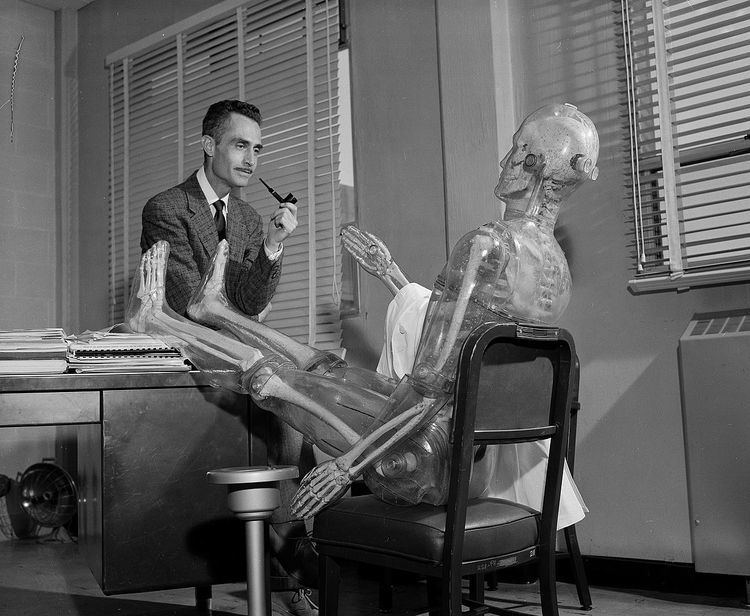Name Wright Langham | ||
 | ||
Wright Haskell Langham (21 May 1911 – 19 May 1972) was an internationally renowned expert in the fields of plutonium exposure, aerospace and aviation medicine, Eniwetok nuclear tests, the Palomares and Greenland nuclear accidents. Sometimes Lagham was referred to as Mr. Plutonium.
Contents
- Life and times
- Radiation Tests on Human Subjects
- Untimely death
- Career Highlights
- Professional Service
- Health Physics Society
- Achievements and Honors
- References
PUQFUA is a computer program written in the FORTRAN language.
Life and times
Wright Haskell Langham was born in Winnsboro, Texas on 21 May 1911. Langham attended Texhoma High School in Texhoma, Oklahoma and graduated in 1930 and earned a BS in Chemistry from Oklahoma Panhandle State College in 1934. Langham was awarded a MS in Chemistry from Oklahoma A & M College in 1935. Next he attended Iowa State University and pursued studies in organic chemistry. Langham completed the Ph.D. in Biochemistry from the University of Colorado in 1943.
Radiation Tests on Human Subjects
Dr. Langham wrote and oversaw experiments intended to gauge the effects of exposure to radioactive elements on humans. The experiments involved injecting subjects with radioactive isotopes of polonium, plutonium or uranium without the informed consent of the subject. Dr. Langham suggested in public papers after the experiments that the patients had been terminally ill.
Untimely death
On 19 May 1972, Langham died in a plane crash. A twin-engine aircraft chartered by the Los Alamos Scientific Laboratories crashed on takeoff from Albuquerque International Airport, killing all nine persons aboard, including Langham, a leading biomedical scientist. Witnesses said the Beechcraft Queen Air, chartered to shuttle Los Alamos personnel between Albuquerque and Los Alamos, apparently lost power in one engine and nosedived into an open field south of the control tower. Authorities reported that all 8 passengers and the pilot were killed when the plane crashed.
The victims Included Dr. Langham, who was then associate division leader for biomedical research at Los Alamos. He had been working at the laboratory since 1944, and was a leading plutonium scientist. The other casualties were technicians or staff members, and were Eugene Teatum, 37; Donald Larson, 46; Bruce Bean, 28; Johnnie Gallegos, 41; Richard Neithammer, 39; William Fray, 40; and John Gill, 43. The pilot was Richard T. Zittel of Ross Aviation. All the victims were from Los Alamos, except for Gill who was from Arroyo Seco, New Mexico.
The plane was on a routine flight from Albuquerque to Los Alamos, lost an engine during takeoff and crashed into the runway. The crash occurred shortly after midday at 1:37 p.m. Aviation officials remarked that high winds (up to 31 knots) might have contributed to the crash.
Career Highlights
Professional Service
Health Physics Society
Achievements and Honors
PUQFUA is a computer program written in the FORTRAN language.
